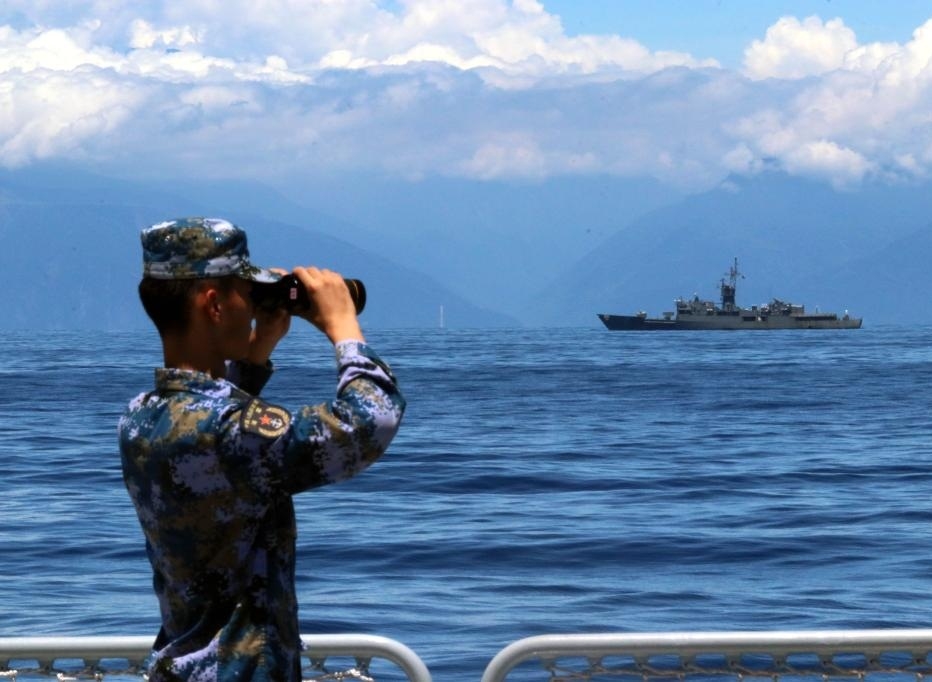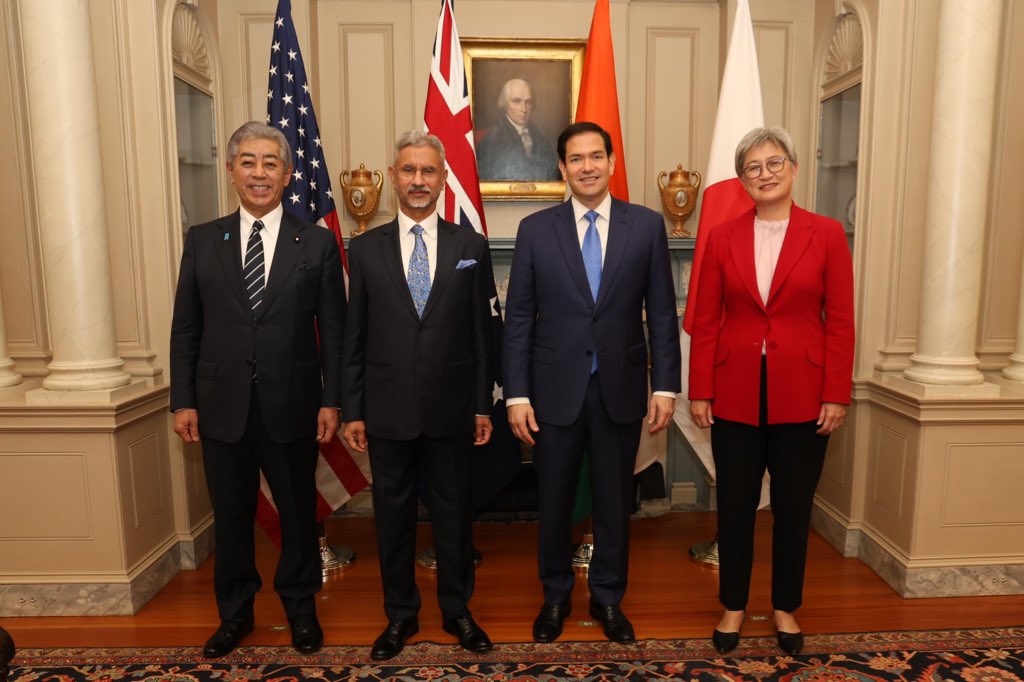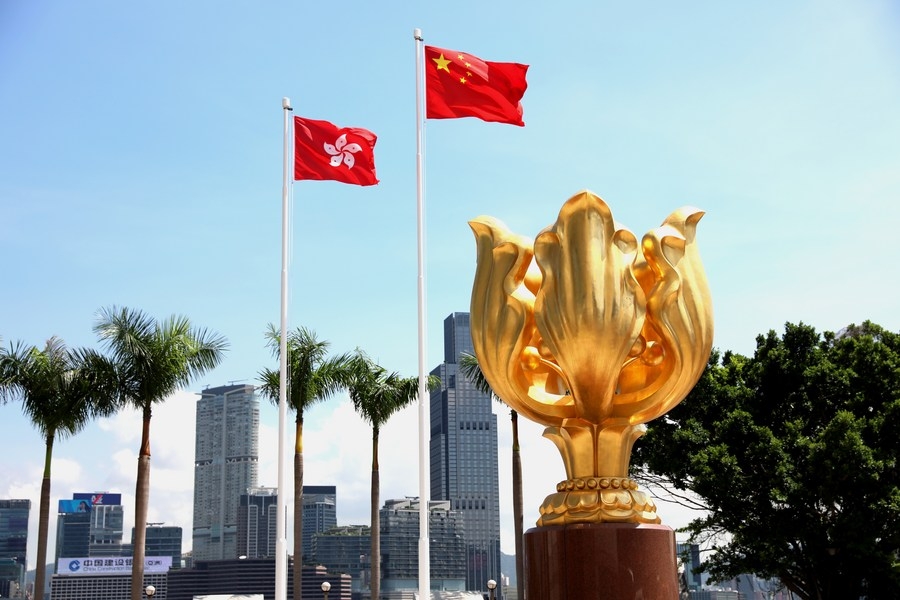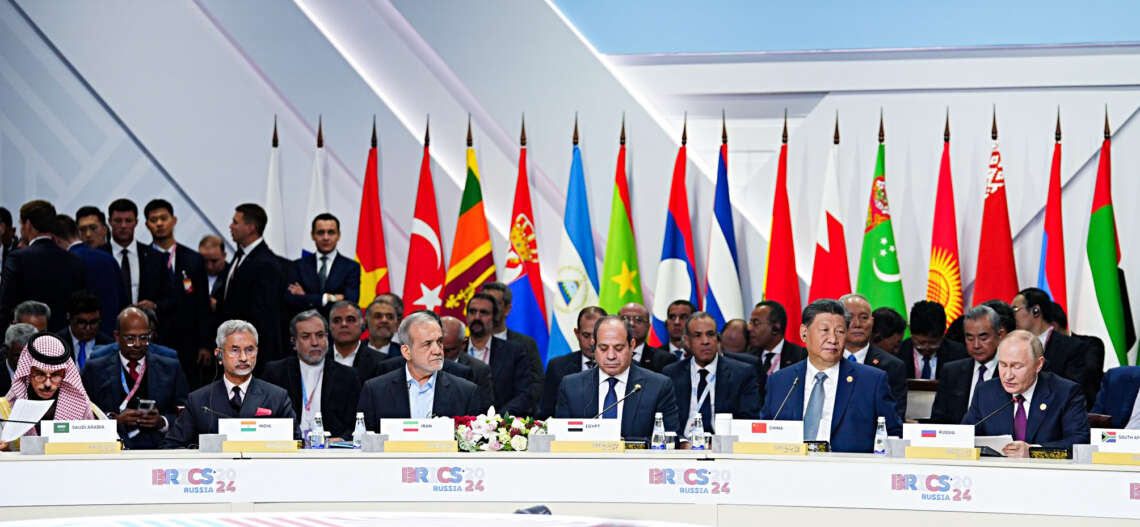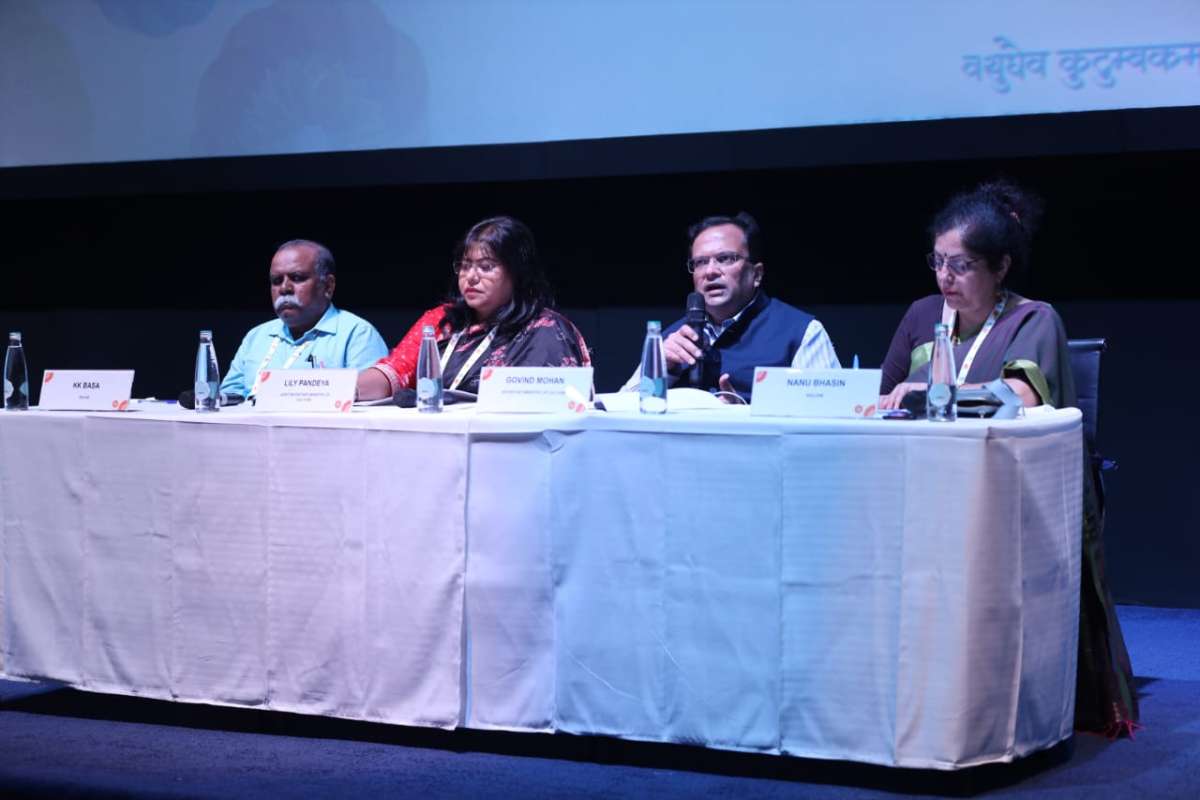Although China has an expanded footprint in the West Pacific as a major goal, it continues to consolidate territorial gains in the South China Sea….reports Asian Lite News
China has already gained de facto control over huge swathes of the South China Sea, it daily sends aircraft and warships close to Taiwan, and it contests passages of foreign warships through the South China Sea and Taiwan Strait. Yet the People’s Liberation Army (PLA) is still dissatisfied, for it feels confined by what is referred to as the First Island Chain.
This so-called chain stretches from the Japanese archipelago to Taiwan, the Philippines and Borneo. If the PLA is to make the most effective use of its brand-new equipment and exercise greater global reach, especially in times of conflict, it must penetrate the First Island Chain. If an enemy site’s anti-ship missiles, sea mines, air defences and submarines narrow straits through which Chinese warships must pass, it becomes extremely perilous for the PLA. Furthermore, China does not have any natural friends along the First Island Chain, especially since the Philippines’ brown-nosed Rodrigo Duterte has departed. Controlling the South China Sea and East China Sea matters little if the PLA’s enemies can keep it bottled up inside the First Island Chain. This fear of containment also emphasizes the importance of Taiwan to China, since capturing it immediately snaps the First Island Chain in two and gives China instant access to the West Pacific.
The Second Island Chain runs from mainland Japan, through Iwo Jima, Guam, the Northern Marianas, Micronesia, Indonesia, Papua New Guinea and Australia. The PLA’s intention is to not only break through the first chain, but to also gain dominance in the maritime area behind it and thus restrict US freedom of movement. Grant Newsham, a former colonel in the US Marine Corps, testified before the US House of Representatives on the topic of Chinese influence on Compacts of Free Association (COFA) states on 14 June. COFA is an agreement between the USA and three sovereign states comprising the Federated States of Micronesia, the Republic of the Marshall Islands and the Republic of Palau.
Newsham asserted that COFA “underpins the entire Unites States defence posture and strategy in the Western Pacific and East Asia”. With the US defensive line hemming in China along the First Island Chain, the US military requires a secure rear area to support logistics for forward defence. COFA states, along with Guam and the Commonwealth of Northern Mariana Islands, are situated in this major east-west “power projection super-highway” that runs from the USA’s west coast. Newsham said it is “indispensable” that this corridor be free of enemy interference since it acts as a plug to close off the South Pacific and most of the Pacific Ocean.
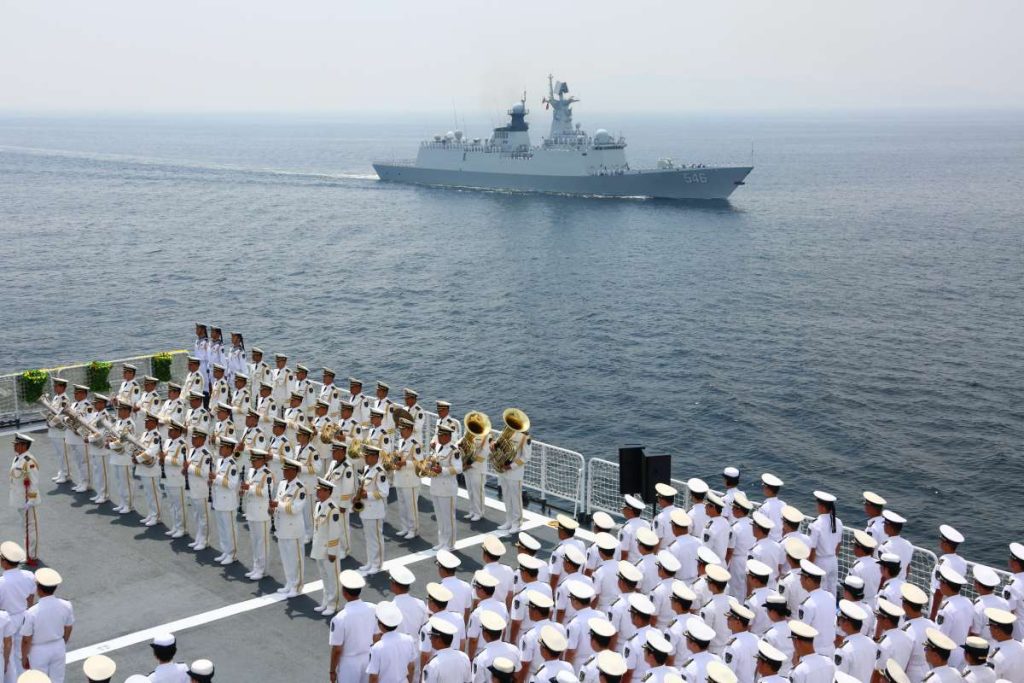
Newsham testified that “China is trying to leapfrog the First Island Chain. If it can burrow itself into the Second Island Chain, it will roil American (and Japanese and Australian) defence plans, and can potentially break down First Island Chain defences from behind … Should the PRC establish a military foothold or gain political dominance with de facto strategic veto power in the COFA states, it will have ‘leapfrogged’ America’s island chain defence and ensconced itself in the USA’s once secure ‘rear area’.”
Newsham warned: “China knows this, which is why undermining the relationship between COFA states and the United States is one of Beijing’s highest strategic priorities.” As well as denying the USA a power projection super-highway, it envisages a corridor of its own running in the opposite direction.
Persistent China is “using political, economic and other soft-power tools to undermine the US presence” there, and “thus weaken the US military defences and capabilities in the Central Pacific,” Newsham stated. Chinese survey ships have scouted undersea cables in Micronesia and Palau, Chinese cyberattacks have installed malware on critical US military infrastructure on Guam, it has installed underwater listening devices in the Mariana Trench, and boasts threateningly about its DF-26 “Guam killer” intermediate-range ballistic missile.
Newsham added: “For the Chinese Communist Party (CCP) to achieve its aspirations, it needs to at the very least render the COFA states ‘harmless’, and ideally be able to use them as launch points under its control.” Proclaimed neutrality by these territories will not deter China, and while the USA is not looking for a fight against China, Chairman Xi Jinping’s belligerent hubris is making it an increasing possibility.
The US military presence in the Second Island Chain is alarmingly small, with just four permanent bases. Only one of these is in a COFA state – the ballistic missile test site at Kwajalein Atoll – while the others are air force, navy and marine corps bases on Guam. A consequence of having so few bases is that the USA is putting a lot of eggs in one basket, all of which are susceptible to Chinese missile attacks. However, new bases in COFA states would permit the USA to disperse forces, spread out for survival and then hit back.
Interestingly, the PLA Navy (PLAN) has just dispatched the Peace Ark hospital ship to Tonga, Kiribati, Solomon Islands, Vanuatu and Timor-Leste. While the PLAN said it was a “pragmatic initiative”, it is a public-relations exercise to shore up Chinese ties with South Pacific countries as part of its wider campaign to penetrate the ring of containment. Beijing has already succeeded in putting Solomon Islands Prime Minister Manasseh Sogavare in its pocket.
China continues to swamp Taiwan with threatening incursions of PLA aircraft and warships. China is so fixated with Taiwan, and seems so intent on conquering it, that it willingly puts up with setbacks and losses of relationships because of this bullying. The “great rejuvenation of the Chinese nation”, according to Xi’s formula, cannot occur until Taiwan is brought under the CCP’s red umbrella.
Retired General Lee Hsi-ming, former Chief of General Staff in Taiwan’s military, said on 29 June that the results of Taiwan’s 2024 elections would not change Beijing’s policy in the slightest. No matter which candidate or party wins, Xi’s resolve will remain the same. Lee argued that the question is not whether Beijing will invade Taiwan, but rather when, for it will not allow the status quo to remain indefinitely.
Although China has an expanded footprint in the West Pacific as a major goal, it continues to consolidate territorial gains in the South China Sea. Indeed, the Philippines is extremely concerned at China’s creeping presence within its exclusive economic zone (EEZ).
Commodore Jay Tarriela of the Philippine Coast Guard (PCG) warned on 8 July that swarms of Chinese vessels at the Reed Bank, some 80nm west of Palawan, may presage an illegal occupation. An unprecedented number of 50+ Chinese vessels have been observed at both Iroquois and Sabina Shoals in the Reed Bank. They include vessels of the People’s Armed Forces Maritime Militia (PAFMM), accompanied by three China Coast Guard (CCG) and two PLA Navy (PLAN) vessels.
Tarriela commented, “The only analysis that we can provide for the presence of these Chinese maritime militias is to swarm a particular maritime feature and to occupy it.” The PCG said their bloated presence, first spotted on 30 June, is a “concerning and alarming development”.
Unlike Duterte’s subservient policy to China, the current Philippine administration has not been shy about exposing China’s alarming antics within its own EEZ. Tarriela said exposure of China’s nefarious activities “has been a tool for us to make sure that China’s aggressive behaviour and bullying activities in the West Philippine Sea will be criticized by the international community”.
Indeed, MaryKay Carson, US Ambassador to the Philippines, commented on 10 July: “We’re concerned by the unprofessional maneuvers of the China Coast Guard against the Philippine Coast Guard. The PRC’s irresponsible behavior in the South China Sea threatens the security and legal rights of our treaty ally, the Philippines. We call on the PRC to comply with international law, including implementing the legally binding 2016 award in the Philippines v. China Law of the Sea Convention arbitration as a starting point to achieve a free and open Indo-Pacific.”
Aggression against the Philippines is nothing new. In 2021, a record 220 Chinese vessels swamped Whitsun Reef. Recently, Chinese vessels interdicted a routine supply mission by two PCG vessels to Philippine marines aboard BRP Sierra Madre at Second Thomas Shoal. The Philippine military uses this grounded and rusting vessel as an outpost. China’s argument was that the PCG tried to “intrude” into its waters “without Chinese permission”. The CCG and PLA are routinely lambasted nowadays for unsafe interceptions in the air or in the sea as they flex their martial muscles.
Last year, the PAFMM engaged in serious encounters with Philippine vessels too. It harassed a Taiwanese research vessel operating alongside the University of the Philippines, while a CCG vessel harangued Norwegian survey vessels looking for oil and gas near Palawan. Last November, the CCG forcibly captured rocket debris being towed by the PCG towards Thitu Island. Such nefarious activity is only strengthening Philippine-US ties, but Xi seems beyond caring.

Vietnam is responding to Chinese villainy too. In the latter half of 2022, Vietnam dredged and reclaimed land on four Spratly Islands outposts (Namyit, Pearson and Tennent Reefs, and Sand Cay), adding some 420 acres. However, this is just a fraction of the 3,200 acres that China created from 2013-16 as it militarized reefs and Xi lied through his teeth about it. Namyit and Pearson Reefs are Vietnam’s largest outposts and, possessing harbors, Vietnam may deploy more vessels there in response to Chinese provocation.
China is also expanding its footprint in Cambodia. Despite denials from both Phnom Penh and Beijing that the PLAN is not establishing a military base at Ream Naval Base bordering the Gulf of Thailand, satellite imagery shows the true extent of Chinese construction there. Activity kicked off in earnest in June 2022 as land was cleared and construction of a cement plant began.
Thomas Shugart, an Adjunct Senior Fellow at the Center for a New American Security, studied satellite images dated from June. He noted the construction of “several sets of sizeable buildings”, presumably a headquarters cum administration and barracks, plus a couple of others for direct operational support (e.g. storage sheds, warehouse). Other buildings exist in the northern part of the base, having been constructed earlier, though there are also new foundations for larger buildings there.
On the eastern side of the base, large-scale construction preparations are under way,
with areas cleared and some smaller buildings expanded.
There is 38,000m2 of reclaimed land in the southern portion of the base. A deep-draft pier has taken shape – it is about 685m long, with 290m of usable berthing space. This makes it big enough to accommodate large warships, of which the Royal Cambodian Navy has none. Clamshell dredges have been deepening the seabed, and it is logical to assume that PLAN warships will use this pier.
Shugart concluded: “In summary, [it] looks like lots of rapid progress is underway on construction of this base – which we also now know will be provided with air defences though, according to the Cambodian government, those air defences will not include ‘Chinese funding, support or presence at these facilities’. And if you believe that, I have a bridge I’d like to sell you!”
This Cambodian location is strategically useful to China, for it gives the PLAN permanent access to the southern part of the South China Sea. This is particularly alarming for Vietnam, which will find the Chinese navy located north, east and south of its coastline. The Ream site is also closer to the Singapore and Malacca Straits, which are vital chokepoints to which China cannot afford to lose access.
Despite increasing tensions in the region, Xi and his diplomatic minions are deaf to protests from others. Under Xi’s direction, the PLA continues to avoid military-to-military communications with the USA. At a time when communication is essential to prevent misunderstandings, China is behaving like a petulant child. Pretending to be a “responsible great power”, Beijing is proving irresponsible and obstreperous, with seemingly little intention of stabilizing relations with the USA.
Xi insists on putting his head in the sand, perhaps the very stuff he dredged up from the seabed of the South China Sea. After his meeting with US State Secretary Antony Blinken on 19 June, Xi said competition among major powers “does not conform to the trend of the times”. Not only is competition growing because of Xi’s own belligerence, but the Chinese leader is actively veering that competition towards conflict. (ANI)


